In Australia in the past few weeks, the so-called misinformation bill has been making headlines as it allows the government to censor online content. For the most part, it has been universally panned, with even left-wing pundits criticising it. Whilst the is definitely a lot of garbage published online or so called “misinformation”, there is also a lot of “misinformation” in the diamond and jewellery industry that deserves to be highlighted, so today, I will be listing seven pieces of “misinformation” in the diamond and jewellery industry.
1. You Can Determine the Light Performance of a Fancy Cut Diamond Using the Proportions Alone
Every so often I come across people trying to judge the light performance of a fancy cut diamond (ie: any shape other than a round) using a set of proportions – usually just the table and depth, but sometimes the girdle, culet, crown height and pavilions depth.
The problem is that these charts and cut grades based on proportions originated from gemmologist David Atlas in the mid to late 1990s. Back then, they were pretty much the best tool available when assessing the cut of a diamond, even though they were obviously very much hit-and-miss. In the mid-2000s however, technology advanced with a slew of tools such as the AGS ASET, raytracing software and numerous other now-defunct tools such as the Brilliancescope from Gemex and the Isee2 analyser.
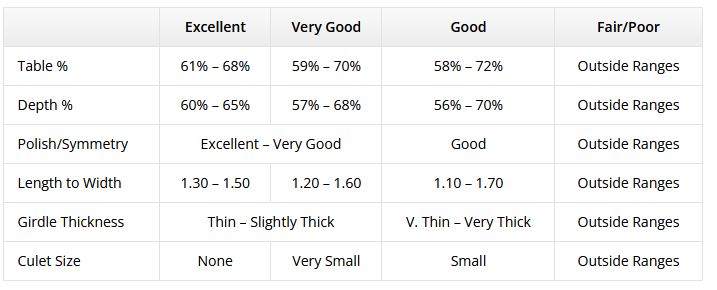
Above: An outdated proportion chart.
Of course, assessing the light performance of a round brilliant cut diamond is a lot easier as proportions, for the most part, are a good way of assessing the light performance based on the inverse crown-pavilion angle theory.
2. GIA Excellent Cut Grade is the Best You Can Get
It’s no secret that the GIA cut grade has become so broad that it is pretty much useless, as even diamonds with a 64% depth earn the excellent grade. However, since their takeover of AGS Labs in 2023, GIA have now adopted the light performance based AGS cut grade as an add-on for both round brilliants and fancy shapes such as princess, emeralds, ovals and cushions. That said, very few in the trade are using this service – most likely because it adds little value over the ASET image, which is something that manufacturers and retailers who use this technology are already using. That said, I’m guessing if you walked into 10 jewellery stores and asked them what the top GIA grade was, all 10 would say “excellent”, which is now incorrect.
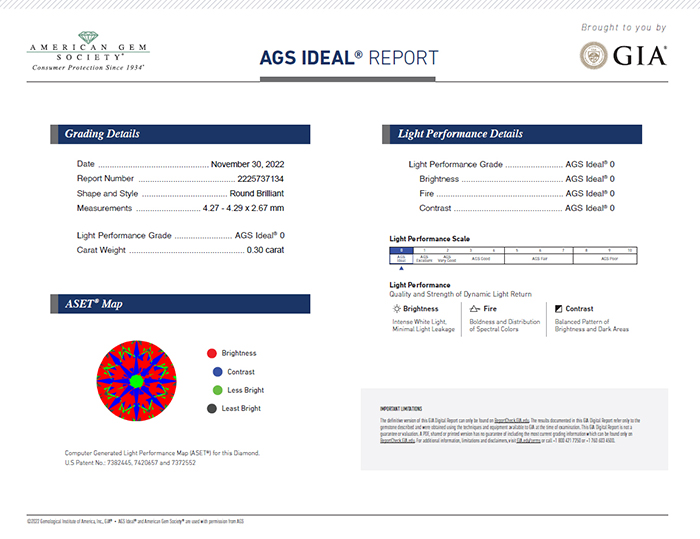
Above: The AGS Light Performance Report from GIA.
3. Platinum is More Expensive than 18kt Gold
The two most common metals used to make fine jewellery are gold and platinum, alloyed with other metals to make them more durable and in the case of 14kt and 9kt gold, less expensive. Traditionally, platinum has been more expensive than gold, most likely due to its rarity. Not to mention, the word platinum invokes connotations of the “best of the best”. However, platinum has been less expensive than gold for almost 10 years, and today, gold is 2.648 times more expensive than platinum.
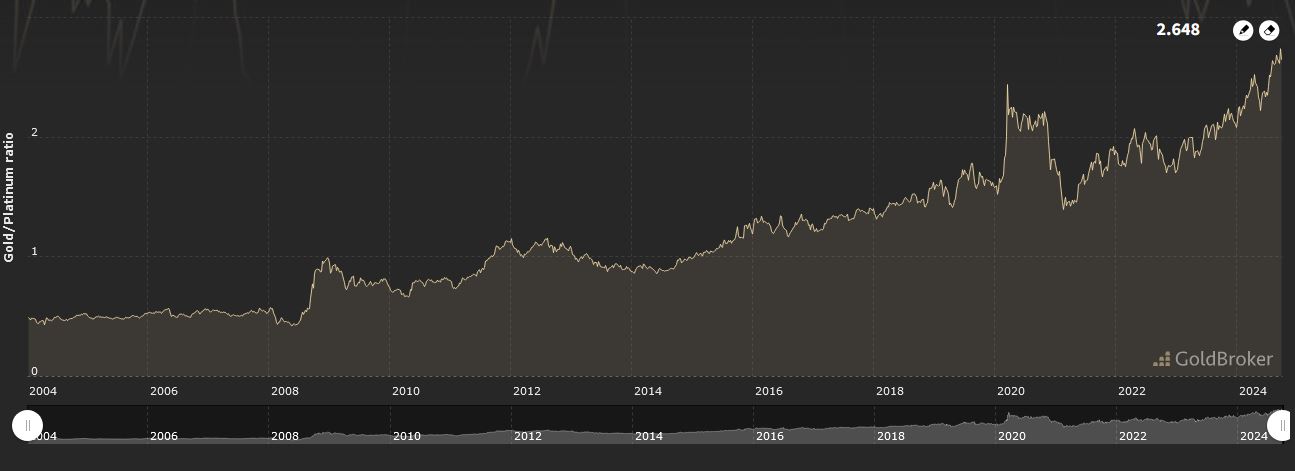
Above: The gold and platinum ratio from the past twenty years.
However, the fact remains that most jewellers still charge more for platinum – something that I think is a complete rort! Sure, there are plenty of arguments for charging more for platinum, such as:
- Platinum is denser, thus heavier and the most common alloy is purer, at 95% platinum.
- Platinum is harder to work with.
- Platinum is more difficult to polish.
- Platinum requires expensive machinery and tools to cast.
However, even with all these factors considered, then cost of making a platinum ring is less than making the same ring in 18kt gold, given that platinum is less than half the price of gold.
4. Diamonds are Not Rare
The fact is that, without any context, diamonds are not rare. There is plentiful supply, and synthetic diamonds have been manufactured for decades. However, the most important fact that most people miss is that both size and quality matter. Essentially, the bigger and the better quality a diamond is, its rarity increases, and so does its price – sometimes exponentially. Perhaps the easiest way to illustrate this point is with the following two figures:
- Two of the world’s largest diamond mines, the Jwaneng and Orapa mines in Botswana have historically achieved prices of just US$121.50 per carat.
- Diamond prices follow more of an exponential pattern in the thousands of dollars per carat, rather than a linear one – based solely on rarity, as shown below.
These two figures point to the fact that diamond mines produce a lot of poor, often non-gem quality diamonds, that usually end up for industrial purposes. Meanwhile, gem quality diamonds are a needle in a haystack, and are priced as such.
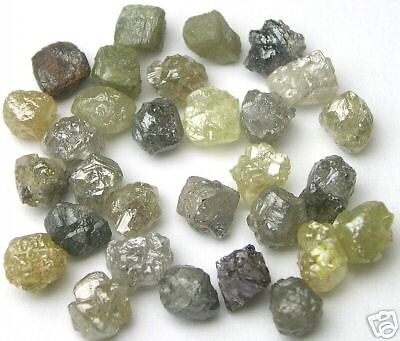
Above: Rough diamonds are mostly small and not gem quality.
5. DeBeers Controls the Supply of Diamonds
Whilst this may have been true in years gone by, DeBeers hasn’t outright controlled the supply of rough diamonds for decades. Today, DeBeers isn’t even the largest diamond miner – with Russian miner ALROSA digging up more rough than DeBeers. Add to this, the plethora of smaller diamond miners such as Burgundy and Petra and the rough diamond market is anything but a monopoly. That said, given the current situation, I am sure a lot in the diamond industry would love a return to the old days where DeBeers controlled prices and profits were stable.
6. Lab Grown Diamonds are the Ethical and Sustainable Choice
When the popularity of lab grown diamonds exploded in the early 2020s, they were marketed as an “ethical and sustainable choice”, with their promoters pointing to human rights abuses and the environmental impact associated with diamond mining. However, these claims have always been overly generalised, usually without any specific reference to modern day diamond mining. People then wised-up to such dubious claims, with one pundit claiming that polished lab grown diamonds release 511kg of greenhouses per carat. Not to mention, most lab grown diamonds are grown in China or India, two countries that aren’t known for their exceptional workers’ rights.
Above: An ABC News report on lab grown diamonds.
7. All Engagement and Wedding Rings are Created Equal
A constant bugbear for jewellers around the world nowadays is customers wanting a ring they have seen online, that, for lack of better words is less than sturdy. When I first started in the industry, we, along with most other jewellers would outright refuse to make anything that would even come close to breaking, which would cause the customer to come back and complain to us, the jeweller who made it. Today, customers are in the driving seat, with millions of ring designs available online, and computer aided design (CAD) being able to easily replicate these designs. Whilst 99.9 percent of the time, these rings are worn without any problems, there is always a small percentage of customers who think their ring is indestructible, which eventually leads to ring damage needing repair. This inevitably leads a lot of jewellers to question if they should even entertain such ring designs or go back to making “indestructible” rings.
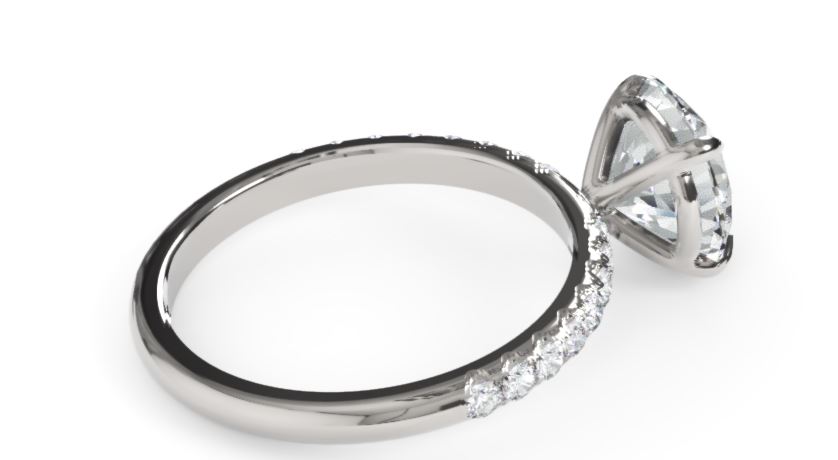
Above: Will the current trend of ultra-fine jewellery continue (to cause a headache for jewellers)?